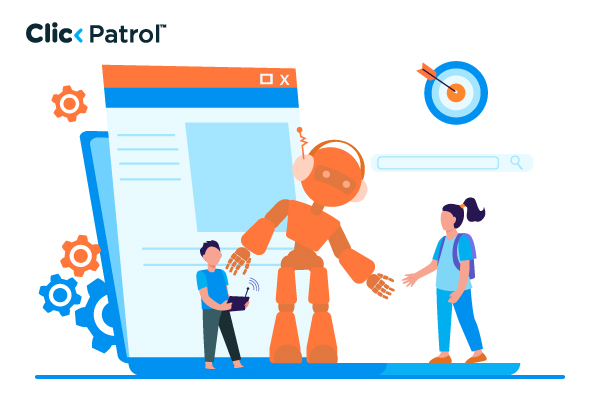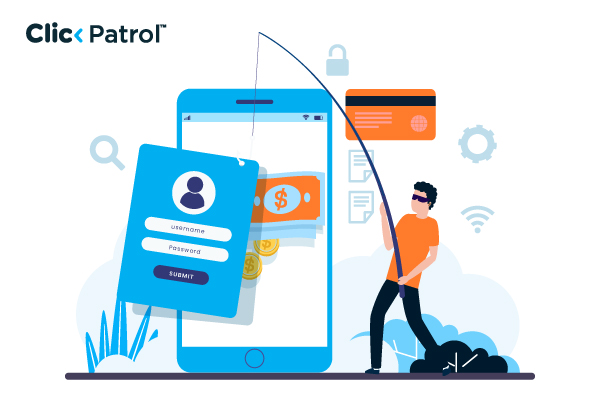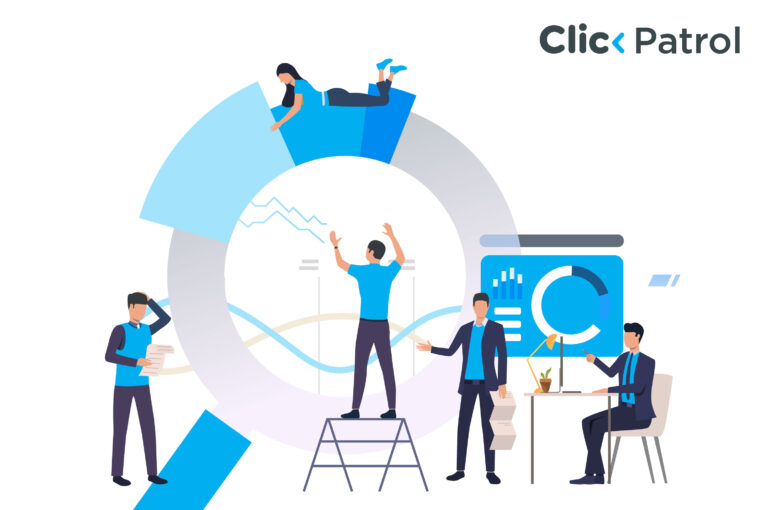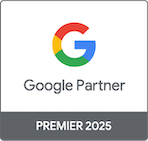
Paid traffic: How to drive targeted visitors and boost ROI with Ads in 2025
Abisola Tanzako | Aug 25, 2025

Table of Contents
- What is paid traffic?
- Top paid traffic sources and how to leverage them
- 1. Search Engine Advertising (PPC)
- 2. Social Media Advertising
- 3. Display & Native Advertising
- 4. Video Advertising
- The benefits of paid traffic
- The challenges of paid traffic
- Key metrics to measure paid traffic
- How to combine paid traffic with organic strategies
- 1. Align your goals
- 2. Use paid Ads to amplify top-performing organic content
- 3. Target new keywords with paid search
- 4. Retarget organic visitors
- 5. Build trust through organic, and close with paid
- 6. Share organic insights with paid campaigns
- 7. Repurpose paid campaign results into organic content
- 8. Combine in email marketing
- 9. Measure and optimize together
- Case study: The Glossier paid Ads success story
- Turning paid traffic into lasting success
- FAQS
Businesses spend over $200 billion annually on paid ads worldwide (Statista, 2024).
With 4.95 billion internet users and rising digital competition, getting visibility is more challenging and more important than ever.
Whether you are an e-commerce business aiming to drive sales or a SaaS company looking to generate leads, paid traffic is a vital part of any high-performing digital strategy.
This guide explores paid traffic types, top strategies for success, and how to avoid common pitfalls.
What is paid traffic?
Paid traffic refers to visitors who land on your website through paid advertisements. This can include campaigns on search engines, social media, or third-party platforms.
Depending on the payment model, businesses may pay per click (PPC), per thousand views (CPM), or per acquisition (CPA).
Unlike organic traffic, which takes time to build through SEO or content marketing, paid traffic offers instant visibility and faster results.
Top paid traffic sources and how to leverage them
There are several channels by which businesses can generate paid traffic.
They all have their strengths, costs, and best applications.
1. Search Engine Advertising (PPC)
a. Platforms: Google Ads, Bing Ads
b. Best for: High-intent traffic and commercial keyword visibility.
2. Social Media Advertising
a. Platforms: Facebook, Instagram, LinkedIn, TikTok
b. Best for: Brand awareness, lead generation, and promoting visual content.
3. Display & Native Advertising
a. Platforms: Google Display Network, Taboola, Outbrain
b. Best for: Broad brand awareness and retargeting, especially with content-based ads.
4. Video Advertising
a. Platforms: YouTube Ads, TikTok, Facebook Watch
b. Best for: Storytelling, product demos, and brand recall.
The benefits of paid traffic
Why do most companies focus on paid traffic despite its cost?
It is because it has several benefits:
1. Instant results: Ads yield fast visibility and clicks.
2. Precise targeting: Reach specific audiences based on location, interests, behavior, and demographics.
3. Scalability: Quickly expand successful campaigns to reach broader markets.
4. Trackable performance: Measure everything from impressions to conversions with data-driven tools.
5. Brand exposure: Even when users do not convert, ads build familiarity and top-of-mind awareness.
The challenges of paid traffic
Although it offers many advantages, paid traffic is not without its limitations.
Strategic planning is crucial for avoiding budget waste and achieving disappointing results.
1. Cost: Paid traffic is expensive, especially in highly competitive industries such as law, finance, or healthcare, where CPCs can range from tens to hundreds of dollars.
2. Ad fatigue: Users will become tired of seeing the same ads repeatedly and become less effective unless creatives are rotated regularly.
3. Learning curve: The Google Ads and Facebook Ads Manager platforms can be challenging to learn. Incompetently managed campaigns burn budget overnight with zero ROI.
4. Dependence: Rigid dependence on paid traffic is a dangerous practice. When ad accounts get suspended or expenses rise, traffic vanishes overnight.
5. Fake clicks: Some businesses suffer from fake clicks when rivals or automated software click on ads intentionally to burn budgets.
Key metrics to measure paid traffic
To determine whether your paid campaigns are successful, you need to monitor key performance indicators (KPIs):
1. CTR (Click-Through Rate): The ratio of users who click your ad to the number who saw it.
2. CPC (Cost per Click): The amount paid for each click.
3. CPM (Cost per Thousand Impressions): How much it costs to show your ad 1,000 times.
4. CPA (Cost per Acquisition): The cost to acquire a customer or lead.
5. Conversion rate: The percentage of users who complete a desired action.
6. ROAS (Return on Ad Spend): Revenue generated per dollar spent on advertising.
How to combine paid traffic with organic strategies
Here is a breakdown of how to do it effectively:
1. Align your goals
Before you combine anything, be clear about what you are trying to achieve:
a. Brand awareness? Use paid ads to reach new audiences while organic content builds trust.
b. Lead generation? Use ads to drive traffic to a landing page and utilize organic email marketing or blog posts to nurture leads.
c. Sales? Use paid retargeting for visitors who interacted with your SEO-optimized product pages.
2. Use paid Ads to amplify top-performing organic content
Take your best blog posts, videos, or social media content that are already doing well organically and boost them with paid ads (Facebook Ads, Google Ads, or LinkedIn Ads).
This gives them more visibility and engagement.
3. Target new keywords with paid search
While SEO takes time, Google Ads (PPC) allows you to target high-intent keywords immediately.
You can:
a. Test different keywords via PPC
b. Then, optimize your organic content based on the results
4. Retarget organic visitors
Use tracking pixels (such as Facebook Pixel or Google Tag Manager) to retarget visitors who came from search engines, blog posts, or social media platforms.
a. These users have already shown interest.
b. Retargeting reminds them and often leads to conversions
5. Build trust through organic, and close with paid
Let your organic content (blogs, videos, emails, social posts) educate and warm up your audience.
Then use paid remarketing campaigns to present special offers, testimonials, or free trials to close the sale.
6. Share organic insights with paid campaigns
Use data from your organic campaigns:
a. What posts had the most shares?
b. What videos had the highest watch time?
c. What blog posts got the most time on page?
7. Repurpose paid campaign results into organic content
Did a particular ad perform well?
a. Turn it into a blog post, a carousel on Instagram, or a YouTube short.
b. Use the headline, image, or call-to-action organically.
8. Combine in email marketing
Utilize organic traffic to grow your email list.
Then:
a. Promote paid offers through email campaigns
b. Segment users based on behavior for both paid and organic targeting
9. Measure and optimize together
Use analytics tools (like Google Analytics, HubSpot, or Meta Business Suite) to track:
a. Where leads and sales are coming from
b. How paid and organic interact
Case study: The Glossier paid Ads success story
Glossier began as a beauty blog, Into The Gloss, which Emily Weiss launched in 2010.
With such deep insight into customers’ demands, she launched Glossier in 2014 as a direct-to-consumer brand specializing in skincare-first beauty.
Leveraging paid traffic, specifically Instagram and Facebook ads, Glossier reached millions through user-generated content, influencer marketing, and sleek, naturalistic imagery.
Paired with data-driven retargeting and high-intent Google Ads, it experienced huge growth.
By 2025, the brand was generating over $7 million per month, with paid traffic and mobile accounting for more than 80% of visits.
Glossier was a cult favorite and poster child for successful modern beauty marketing.
Turning paid traffic into lasting success
Paid traffic is a vital resource in today’s competitive digital landscape, offering instant visibility, targeted precision, and scalable growth.
From SaaS giants to e-commerce upstarts, those companies that dominate paid advertising can deliver measurable outcomes and sustainable success.
As platforms adapt to AI automation, shifting privacy concerns, and changing consumer behaviors, businesses must evolve their strategies to remain competitive.
Ready to scale your traffic? Start testing targeted paid campaigns today with a smart budget and tracking plan.
FAQS
Q. 1 Is paid traffic better than organic traffic?
Paid traffic gives immediate visibility and targeted reach, while organic traffic takes time but gives long-term dividends.
The best result comes from a combination of both.
Q. 2 How can I measure the success of a paid traffic campaign?
Track key metrics, including CTR, CPA, ROAS, and conversion rate.
Utilize tools like Google Analytics and ad platform dashboards to measure performance and make informed, data-driven decisions.





